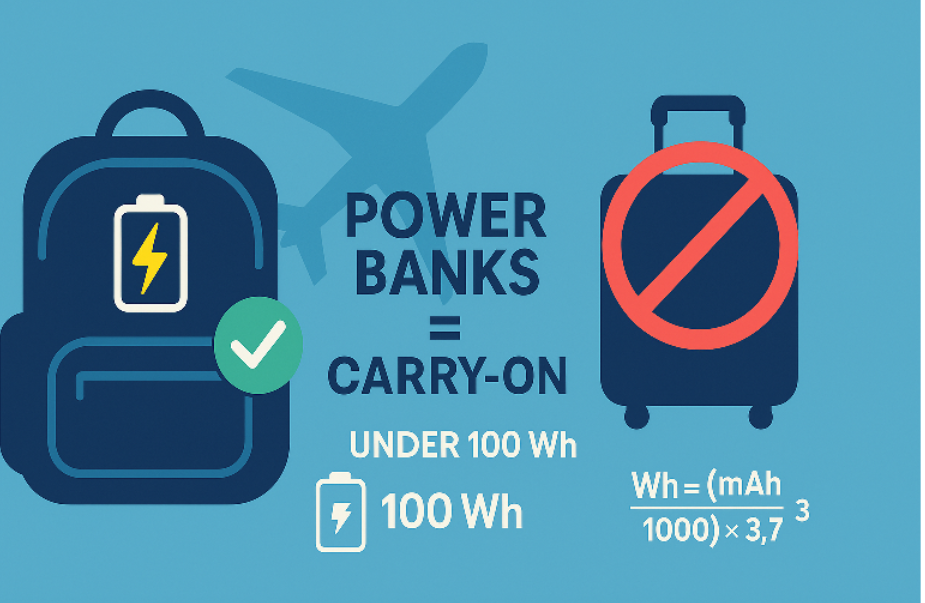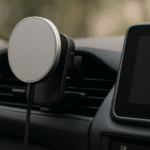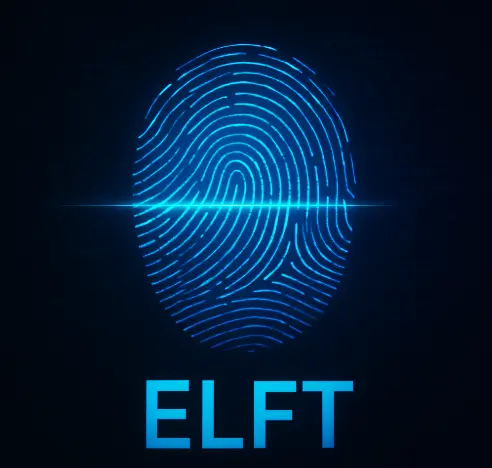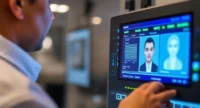Travel days are long (your phone always seems to die at the worst moment), and the airport wall outlets are taken. There’s something about a power bank that makes it feel like a lifesaver. And then the fear: will security confiscate it? The short answer is yes, you can fly with a power bank, but you need to know just a couple of simple rules about where to stash it, how big the power bank can be, and how many you can bring. This time, let’s go through it all in plain language, so you arrive at the airport confident and fully charged.
The Bottom Line: Power Banks Belong in Carry‑On Not Checked Bags
Power banks are treated as lithium batteries by airlines and aviation authorities. Lithium cells can become overheated if they are damaged or short‑circuited, and so the regulators want them where a crew member can get to them easily. That is why nearly every airline recommends carrying power banks in your cabin bag or personal item. If you stick one in a checked bag and it dies 30,000 feet over the D.F.W. airspace, no one will know until it is too late.
I learned this the hard way, on a red‑eye to Dubai. I threw my giant, 30,000 mAh battery in a checked suitcase because my backpack was “already heavy.” When I got to my connecting flight, there was a bright orange sticker in my bag telling me security had taken it out. I arrived at my ultimate destination … but without my phone. My general rule since then has been clear: If it has a battery capable of charging other devices, it travels with me, not under me.
Why Airlines Are Concerned: Lithium for Its Chemistry and Fire Danger
Power banks contain lithium‑ion or lithium‑polymer cells. These chemistries store an enormous amount of energy in a very small space, which is great for charging your phone but game-over dangerous when damaged, punctured, or shoddily made. It’s furthermore the case that should any one cell go into thermal runaway (which is much less common than you might think), smoke, or flame could follow. Flight attendants are trained and equipped to suppress and contain a device; cargo holds are not.
That is the logic for every other rule you will see: restrictions on size, explicit permission for very big banks, and no power banks inside smart luggage if the battery can’t come out.
Watt-Hours, Milliamp-Hours, and What Those Numbers Really Mean
Regulations are typically in watt-hours (Wh). Consumer power banks would be typically marketed on the basis of milliamp-hour (mAh). A simple formula connects the two:
Wh = (mAh ÷ 1000) × Voltage
The internal cells on most power banks are 3.7V. For reference, a 10,000 mAh bank is about 37 Wh. A 20K bank is 74 Wh. A 27,000 mAh bank is roughly 100 Wh (27 × 3.7). There you go past 100 Wh, and the rules start to tighten.
If your power bank provides only a mAh rating and not Wh, write down the formula on a Post-it note and carry it in your travel wallet. Security officers like quick, clean responses.
The 100 Wh and 160 Wh Lines in the Sand
The majority of principals (TSA (USA), EASA (Europe), CAA (UK), CASA (Australia), IATA guidelines) all fall into similar bands:
- Less than 100 Wh: may be carried in carry‑on without special approval. That covers nearly all consumer power banks, from slender 5,000 mAh sticks to everyday 20,000 mAh bricks.
- 100–160 Wh: Generally accepted in carry‑on, but some airlines demand that you request permission first. Some large‑capacity laptop power banks and a few professional camera packs are in this category. Airlines may also limit these to a certain number, frequently two.
- Over 160Wh: Unavailable for passengers in the majority of cases. These are industrial or medical packs, not things into which you will casually plug in a phone. If you somehow have one in your possession, ship it separately according to dangerous goods procedures.
How many power banks can you carry?
Rules differ slightly by carrier, but there is growing standardization. And many do permit several small banks of less than 100 Wh, provided that they are for “personal use.” If you have six 20,000 mAh all one-pound units in retail packaging, they might suspect it’s a commercial distribution and hold you up. I have two – one is main, the other is just in case. It’s an elegant compromise between readiness and examination.
If you need more for work — say, you’re filming at an event, for example — email or message the airline in advance and carry the written confirmation. It’s worth the five minutes.
Pack Smart: How to Travel With a Power Bank Without Any Hassle
Keep it where you can grab it easily. Many checkpoints also want you to remove lithium batteries, as with laptops. If you keep it in an outer pocket of your bag, do so in a small pouch so it isn’t loose with change or keys that could short the terminals.
Suppose they are different, tape over or cover exposed metal ports. Recessed USB ports on modern power banks, so you’re good. That D.C. Jack of yours or bare contacts? A smidgen of electrical tape is probably not a bad idea to work over the inspector’s nerves.
If it’s possible, switch it off or lock the button. A travel mode is available on some models. If you can’t turn it off, at least unplug it so that no cable can inadvertently switch on that computer in your bag.
What Size Power Bank Is the “Best” for Flying?
For most people, 10,000 to 20,000 mAh is the sweet spot. It maintains you under the 100Wh threshold if that is a concern, with room to spare, while still giving the capacity to charge a modern phone two to four times. If you travel light and just need an emergency top‑up, a super‑slim 5,000 mAh stick is almost weightless and flies through checks.
If you want to charge over USB‑C for a laptop, or a higher-wattage tablet (like an iPad Pro) with a higher wattage, you may want to pick up a 25,000–27,000 mAh model (about 90–100 Wh) with PD at a 60 W or even 100 W maximum — that’s usually the useful maximum before you’d need airline to pre-approve it as a battery or whatever, and will make a definite difference during layovers with limited wall outlets.
International Variations: Broadly the Same, Slightly Different
Though the broad strokes are global, every country phrases them a little bit differently. China frequently limits you to 20,000 mAh without accompanying documentation. Some Middle Eastern carriers require you to bring very large power banks to the gate staff’s attention before boarding. Budget airlines sometimes follow the lead of the major carriers, but they impose lower caps to reduce risk, period.
The better habit, as always, is to consult two places before you fly: the airline’s dangerous goods page, which you can find with a search engine, and this airport security authority information for your departing country. These pages are small, updated frequently, and therefore worth bookmarking.
What About Smart Luggage Built‑in Power Banks?
Smart suitcases were a cool fad until airlines realized that a lithium battery embedded in a cargo hold is bad news. Sure of Contents If You Have a Built‑in Power Bank If your suitcase includes a built‑in power bank, ensure that it’s removable. Most airlines now make you remove the battery pack at check‑in if the bag is being checked. If you are bringing the suitcase on board, some carriers insist on removing the battery.
It’s decorative only,” and why I once watched a family at Heathrow take apart a brand‑new smart case with a penknife because the zipper for the battery compartment was decorative only. No one else needs to become aware of your face-mask injury thanks to at-home removal testing options.
Can You Take Your Power Bank on the Plane?
Generally yes. Flight attendants rarely take issue with your charging your phone or tablet with your own battery. And just observe good manners during takeoff and landing, when devices are to be stowed, and keep cords neat so no one trips. If a flight attendant tells you to unplug, do, and then plug back in later.
Some airlines even recommend passengers not use seat‑back USB ports because of power limitations and the potential for them to not work properly. Get faster, safer charging with a good power bank.
Travelling with More Than One Gadget: Cameras, Drones and Game Consoles
Each of them also has its own battery regulations that approximate power banks. Loose lithium batteries (like extra DSLR packs or drone batteries) go in carry‑on, with the terminals taped over or in protective cases. Drones themselves might be subject to some services’ own approval, but the basic battery logic is the same: keep them with you, not in the hold.
If you are on a trip with a drone and multiple high‑capacity packs, check them at the gate. It’s a quicker fate than getting pulled aside for the extra inspection later.
Alternatives to Carrying a Power Bank
If you’re traveling and your power bank is heavy or you forget it, you can rent a power bank at an airport kiosk; you can also buy a less expensive one at your destination. USB‑C fast chargers are smaller than ever, so you might be able to get away with just a 30 W wall adapter and a short cable, if your airport or plane seat has outlets. Some travelers swear by battery cases that snap on to the phone, though these are still lumped in the lithium battery group and need to be kept in carry‑on.
A Pre-Flight Check List to Keep You Out of Trouble
- Verify capacity. Run the check for <100 Wh, or have documentation that it’s between 100–160 Wh.
- Pack in carry‑on. Never check it.
- Protect the ports. Prevent short circuits with a (slim) pouch or (too) covers.
- Charge it safely. Do not bring a swollen, damaged, or unusually hot power bank.
- Know your airline’s wording. A two‑minute read saves a twenty‑minute argument.
Final thoughts
A backup battery makes it easy to find your way, entertain yourself, and stay in touch from home to hotel without having to search for outlets. The rules appear daunting but, on closer inspection, they really only come down to three things: carry it with you, keep it to under 100 Wh unless you’ve received permission, and make sure it’s in mint condition. Follow those, and you’ll sail through security while the rest of the herd is still clustering around the charging station. Safe travels and happy charging.
FAQs
Can I Carry a Power Bank in Checked Baggage?
No. Air carriers have banned lithium power banks in checked luggage from almost all flights. Always bring them on; the crew can handle any problem.
What’s the maximum size of power bank I can carry without checking with the airline?
Under 100 Wh and you can usually do it without advance arrangement. That’s equal to about 27,000 mAh at 3.7 V. Convert, if the label only reads mAh.
What if a power bank doesn’t specify watt‑hours?
Use the equation Wh = (mAh / 1000) * 3.7. If you’re in doubt, print or take a screenshot of the calculation for security.
Can I carry two or more power banks?
Yes, within reason. Personal use levels are acceptable. Notify the airline in advance for several large packs.
Do the regulations for airlines work the same anywhere?
The base safety logic is the same, but wording and limits are a bit different. Be sure to look at the airline and the authority of the departing country.
Will I have to take the power bank out at security like a laptop?
Some checkpoints require it, others don’t. Keep it where you can get to it fast if someone asks to see it.
Am I allowed to use my power bank on an airplane?
Typically, yes, provided your crew allows devices in use. Be ready to unplug for takeoff and landing, or when asked.
But what of those built‑in power banks in smart luggage?
The battery must be removable. If you check the bag, you have to remove the battery and carry it on the plane.
When are power banks completely prohibited?
For large industrial batteries, those over 160 Wh are prohibited for passenger use. And if a power bank appears shabby or homemade, security may confiscate it, regardless of size.














Leave a comment